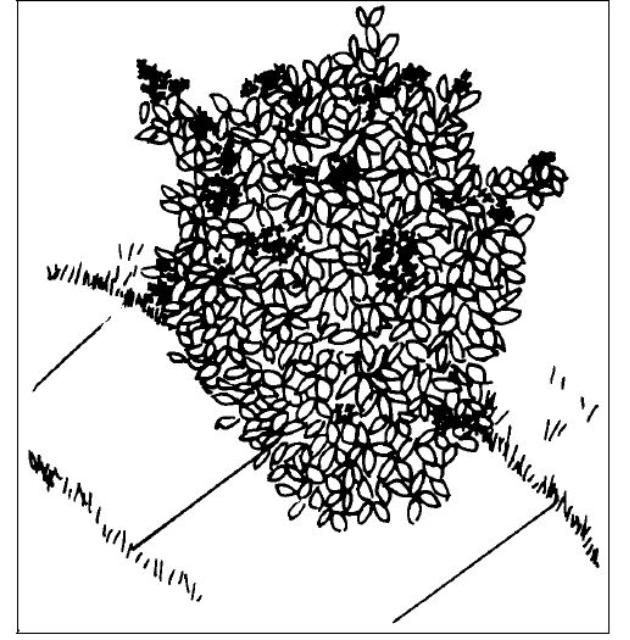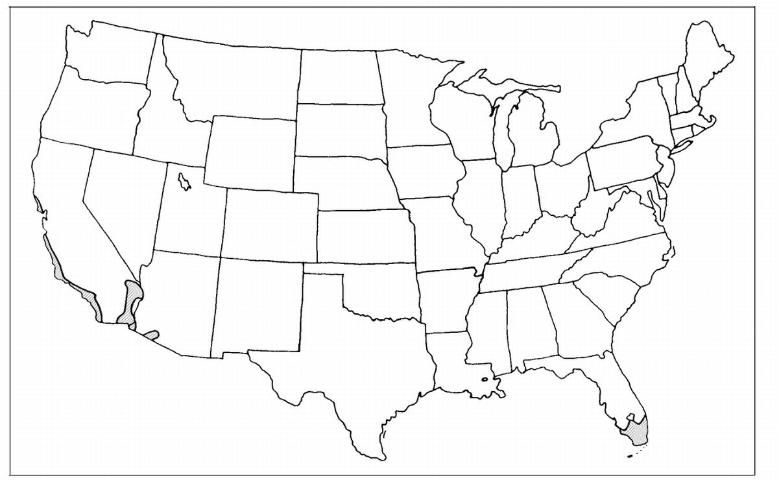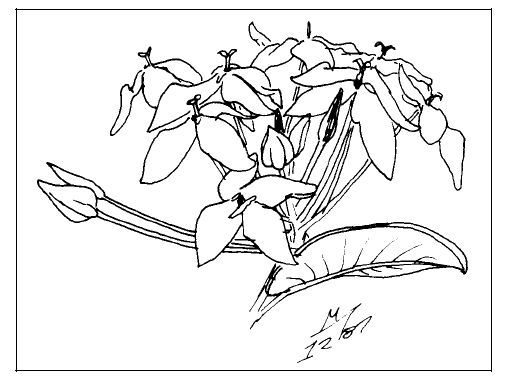Introduction
Four to six-inch globular clusters of bright red, orange, yellow, pink, or white tube-shaped flowers bloom continuously under ideal conditions in full sun (Figure 1). The two to three inch-long leaves are bronzy when young, later turning to a glistening dark green. The much-branched, compact habit of Ixora makes it ideal for hedges, borders, screens, or as a specimen planting, and it may be pruned at any time. Shearing to maintain a hedge will reduce the flower display.

General Information
Scientific name: Ixora coccinea
Pronunciation: ick-SOR-uh kock-SIN-ee-uh
Common name(s): Ixora
Family: Rubiaceae
Plant type: shrub
USDA hardiness zones: 10 through 11 (Figure 2)
Planting month for zone 10 and 11: year round
Origin: not native to North America
Uses: screen; border; container or above-ground planter; hanging basket; superior hedge; accent; attracts hummingbirds; small parking lot islands (< 100 square feet in size); mediumsizedparking lot islands (100-200 square feet in size); largeparking lot islands (> 200 square feet in size)
Availablity: generally available in many areas within its hardiness range

Description
Height: 10 to 15 feet
Spread: 4 to 10 feet
Plant habit: upright; oval
Plant density: dense
Growth rate: slow
Texture: medium
Foliage
Leaf arrangement: whorled
Leaf type: simple
Leaf margin: entire
Leaf shape: ovate
Leaf venation: pinnate
Leaf type and persistence: evergreen
Leaf blade length: 2 to 4 inches
Leaf color: green
Fall color: no fall color change
Fall characteristic: not showy
Flower
Flower color: red; yellow; pink; white; orange
Flower characteristic: year-round flowering

Fruit
Fruit shape: round
Fruit length: less than .5 inch
Fruit cover: fleshy
Fruit color: purple
Fruit characteristic: inconspicuous and not showy
Trunk and Branches
Trunk/bark/branches: not particularly showy; typically multitrunked or clumping stems
Current year stem/twig color: reddish
Current year stem/twig thickness: thin
Culture
Light requirement: plant grows in part shade/part sun
Soil tolerances: clay; sand; acidic; loam
Drought tolerance: moderate
Soil salt tolerances: poor
Plant spacing: 36 to 60 inches
Other
Roots: usually not a problem
Winter interest: plant has winter interest due to unusual form, nice persistent fruits, showy winter trunk, or winter flowers
Outstanding plant: plant has outstanding ornamental features and could be planted more
Invasive potential: not known to be invasive
Pest resistance: very sensitiveto one or more pests or diseases which can affect plants health or aesthetics
Use and Management
Ixora thrives in full sun in moist but well-drained acid soil but can tolerate some shade. Foliage turns yellow in alkaline soil such as next to sidewalks and foundations, where it is often planted. A continued micronutrient fertility program is neededto maintain green leaf color in alkaline soil. The cultivar 'Fraseri' has brilliant reddish-salmon flowers. 'Crimson King' has bright red flowers. Dwarf cultivars are available and are well suited for container planting.
Propagation is by cuttings.
Problems include nematodes, aphids, bagworms and scale.Chlorosis in alkaline soil makes this a high maintenance plant in many coastal landscapes. Treatment with an appropriate micronutrient fertilizer can temporarily prevent or correct chlorosis. Chelates with iron and/or manganese correct and help prevent chlorosis.
Pest and Diseases
Mushroom root rot can be a problem for Ixora.